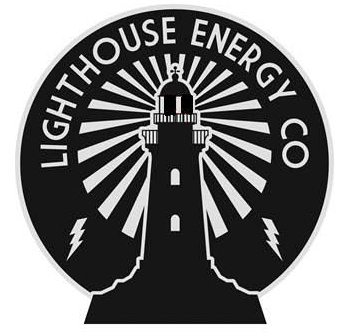Why Electrical Distribution Systems Power Everything You Do
Electrical distribution systems are the critical infrastructure that delivers electricity from power plants to your home, business, or facility. As the final stage in the power delivery process, they step down high-voltage electricity from transmission lines to safe, usable levels through a network of substations, transformers, and power lines.
When you flip a switch, you’re relying on this vast, unseen network. From Edison’s first DC power station to today’s sophisticated AC grids, the fundamental goal remains the same: getting power where it’s needed, safely and reliably.
Today’s grids face unprecedented demands from electric vehicles, renewable energy sources like rooftop solar, and aging infrastructure. Understanding these systems is crucial for facility managers, business owners, and anyone who relies on consistent power.
I’m Bruce Kemp, and I’ve spent decades working hands-on with electrical distribution systems as an electrical contractor and energy systems engineer. I’ve learned that reliable power delivery is about understanding how every component works together to keep the modern world running.
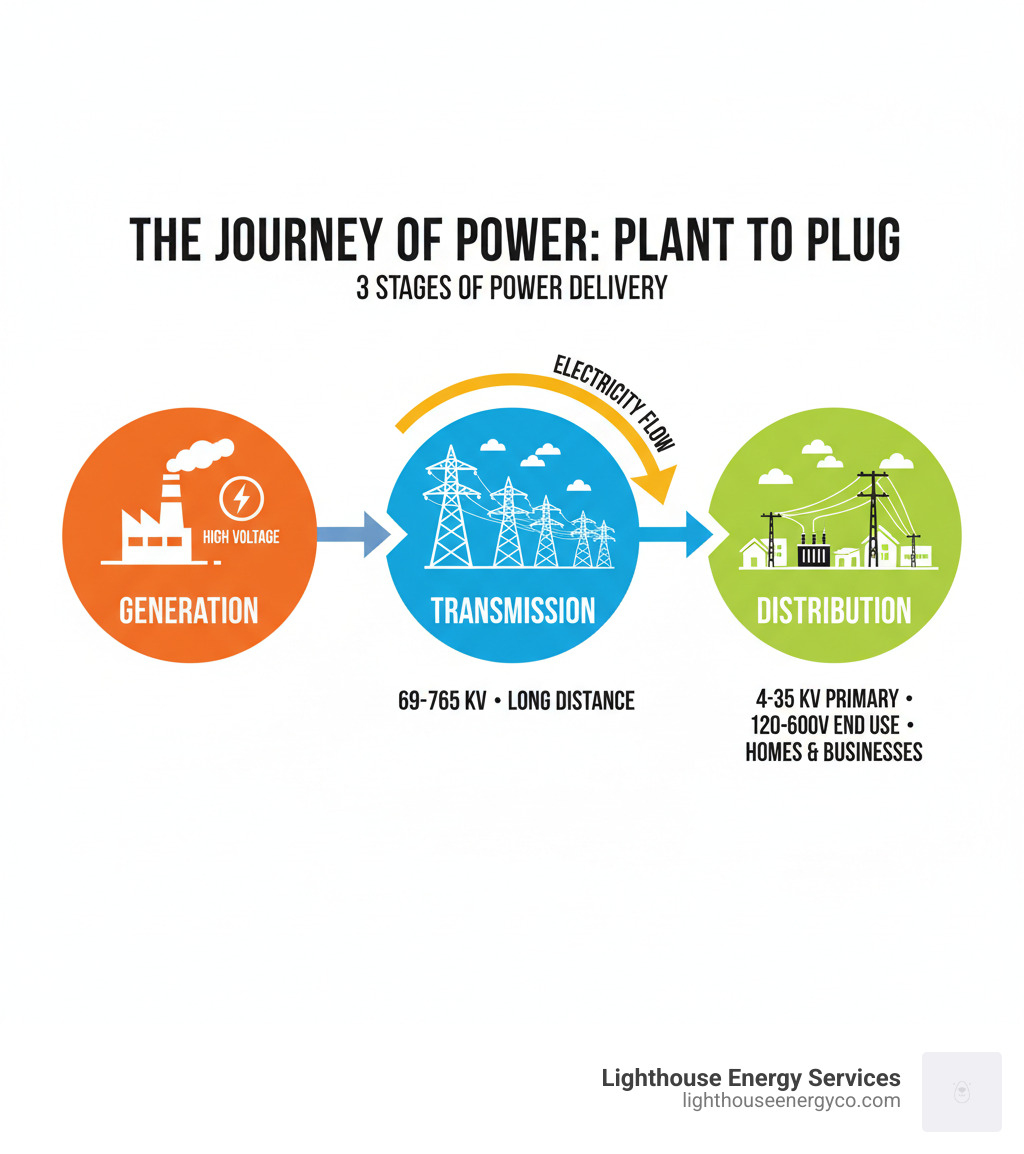
The Journey of Power: From Plant to Plug
That simple action of plugging in your phone is the final step in an incredible journey. It begins at a power generation facility, where electricity is created at high voltages.
Next, in the transmission stage, substations step up the voltage to extremely high levels (69 kV to 765 kV). This allows power to travel long distances across massive transmission lines with minimal energy loss. The higher the voltage, the lower the current, which cuts power loss significantly.
Electrical distribution systems enter the picture when this high-voltage electricity arrives at a distribution substation near your community. Here, transformers step the power down to a medium voltage (typically 4 kV to 35 kV). These substations act as the nerve center for local power delivery, using circuit breakers and switches to control and protect the local grid.
From the substation, primary distribution lines (overhead or underground) carry this medium-voltage power through neighborhoods. Finally, a distribution transformer—the gray cylinders on utility poles or green boxes in yards—performs the final voltage reduction to the utilization voltage your devices use, typically 120/240 volts for homes in North America. From there, a service drop connects to your building’s electrical panel, completing the journey from plant to plug.
Key Components of an Electrical Distribution System
- Substations: Transition points that step down voltage from transmission to distribution levels and house protective and control equipment.
- Transformers: Devices that step voltage down for final use. They are rated in kVA (kilovolt-amperes) based on their power capacity.
- Conductors: The overhead wires or underground cables that serve as pathways for electricity.
- Utility Poles: Structures that support overhead lines, transformers, and other equipment.
- Protective Devices: Fuses, circuit breakers, and switches that protect the system from overcurrents and faults, ensuring safety and isolating problems.
- Meters: Devices that measure electricity consumption for billing. Modern smart meters provide real-time data for improved grid management.
Understanding Voltage Levels and Frequencies
Power grids use different voltages for specific purposes. High voltage (69 kV-765 kV) is for efficient long-distance transmission. Medium voltage (4 kV-35 kV) is for primary distribution through neighborhoods. You can find more detail on these standards in this resource on primary distribution voltage levels. Low voltage is for utilization in homes and businesses (e.g., 120/240V in North America).
Frequency, measured in Hertz (Hz), is how often the alternating current reverses direction. The Americas use 60 Hz, while most of the world uses 50 Hz. Commercial and industrial facilities often require three-phase power for its efficiency in running large motors and heavy equipment, while homes typically use single-phase power.
How Customer Needs Shape the Grid
Distribution systems are custom to different customer types:
- Residential: Modest power needs, typically served with single-phase 120/240V power.
- Commercial: Higher power needs for stores and offices, often requiring three-phase service for HVAC and equipment.
- Industrial: Massive three-phase power requirements for manufacturing and heavy machinery, often served at higher voltages from a dedicated substation.
- Transportation: Specialized power needs for trains, subways, and growing EV charging networks.
A well-designed system accommodates these diverse needs simultaneously, balancing loads and ensuring reliability for everyone.
Types of Electrical Distribution Networks
Not all electrical distribution systems are built the same. The configuration, or topology, of the network determines its reliability, cost, and how quickly power can be restored after an outage. It’s a balance between performance and economics.
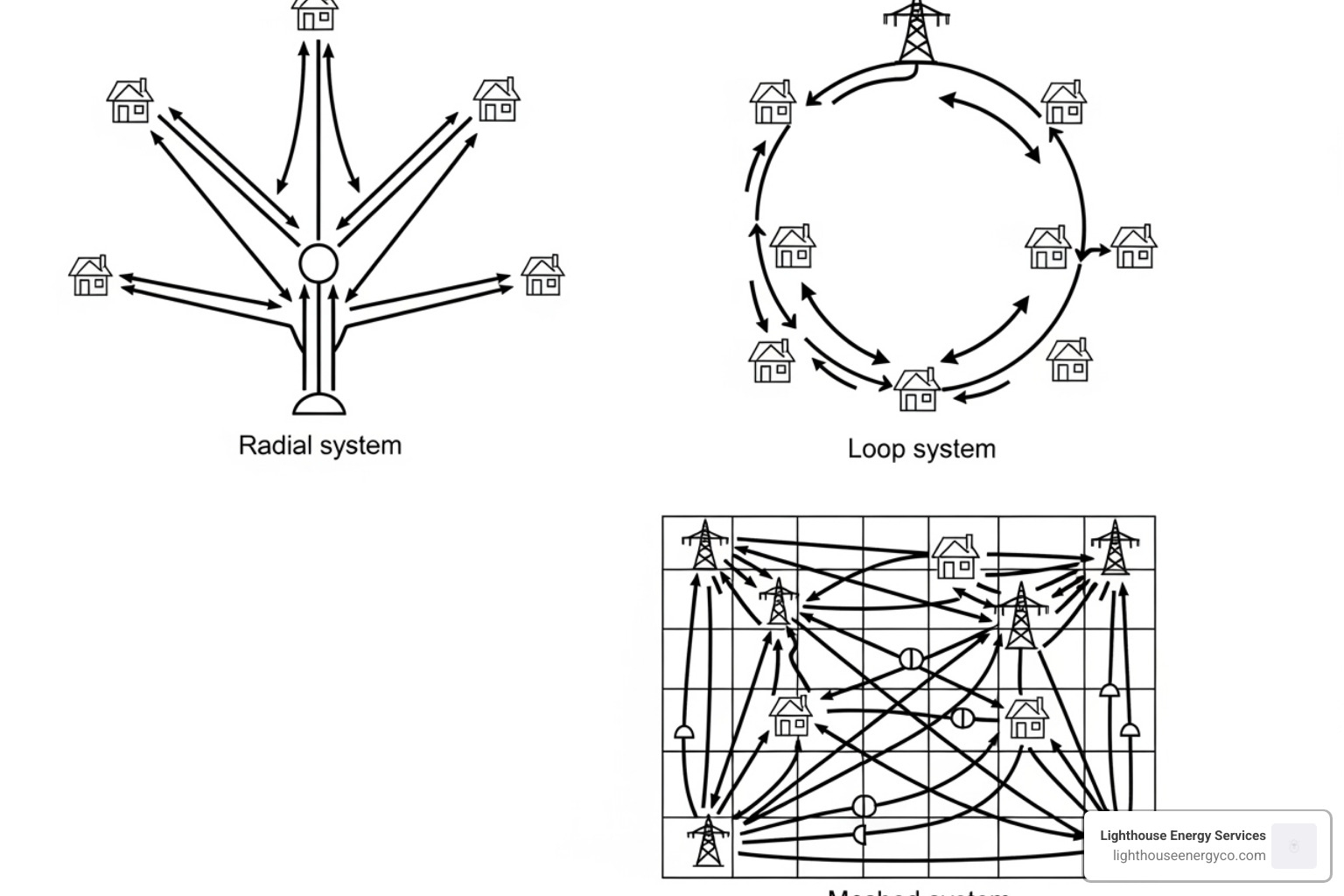
Network Configurations: Pros and Cons
There are three main configurations for electrical distribution systems:
Radial systems are the simplest and most common, especially in residential areas. Power flows from a single source along one path to consumers, like branches on a tree. They are inexpensive to build but are the least reliable; a single fault can cause an outage for everyone downstream.
Loop systems offer improved reliability. Power flows in a circle, so if a fault occurs on one section of the loop, switches can isolate the problem and reroute power from the other direction. This configuration is common for commercial buildings and urban districts where reliability is more critical.
Network systems provide the highest level of reliability by connecting each customer to at least two different power sources. This creates a resilient mesh of power pathways, ensuring continuous power even if one source fails. These systems are essential for critical facilities like hospitals and data centers but are the most expensive to build and maintain.
| System Type | Cost | Reliability | Common Applications |
|---|---|---|---|
| Radial | Low | Low | Residential, rural, suburban areas |
| Loop | Medium | Medium | Large commercial buildings, urban districts |
| Network | High | High | Critical facilities, dense urban centers |
Geographical System Designs
System design also varies significantly by location:
Urban systems serve high-density areas with massive power demands. To save space and improve aesthetics, infrastructure is typically placed underground in conduits and vaults. These systems are often networked for maximum reliability but are expensive and complex to repair.
Suburban systems are often a hybrid, using a mix of overhead lines on poles and underground cables. This approach balances cost, reliability, and appearance, serving a diverse mix of homes, shops, and offices.
Rural systems must cover vast distances with few customers. They rely almost exclusively on overhead lines and use higher voltages to minimize power loss over long runs. The main challenges are exposure to weather, falling trees, and the long distances repair crews must travel.
Designing and Maintaining Modern Electrical Distribution Systems
Building and maintaining electrical distribution systems requires careful planning and constant vigilance. A well-designed system operates reliably for decades, ensuring families are safe and businesses are productive.
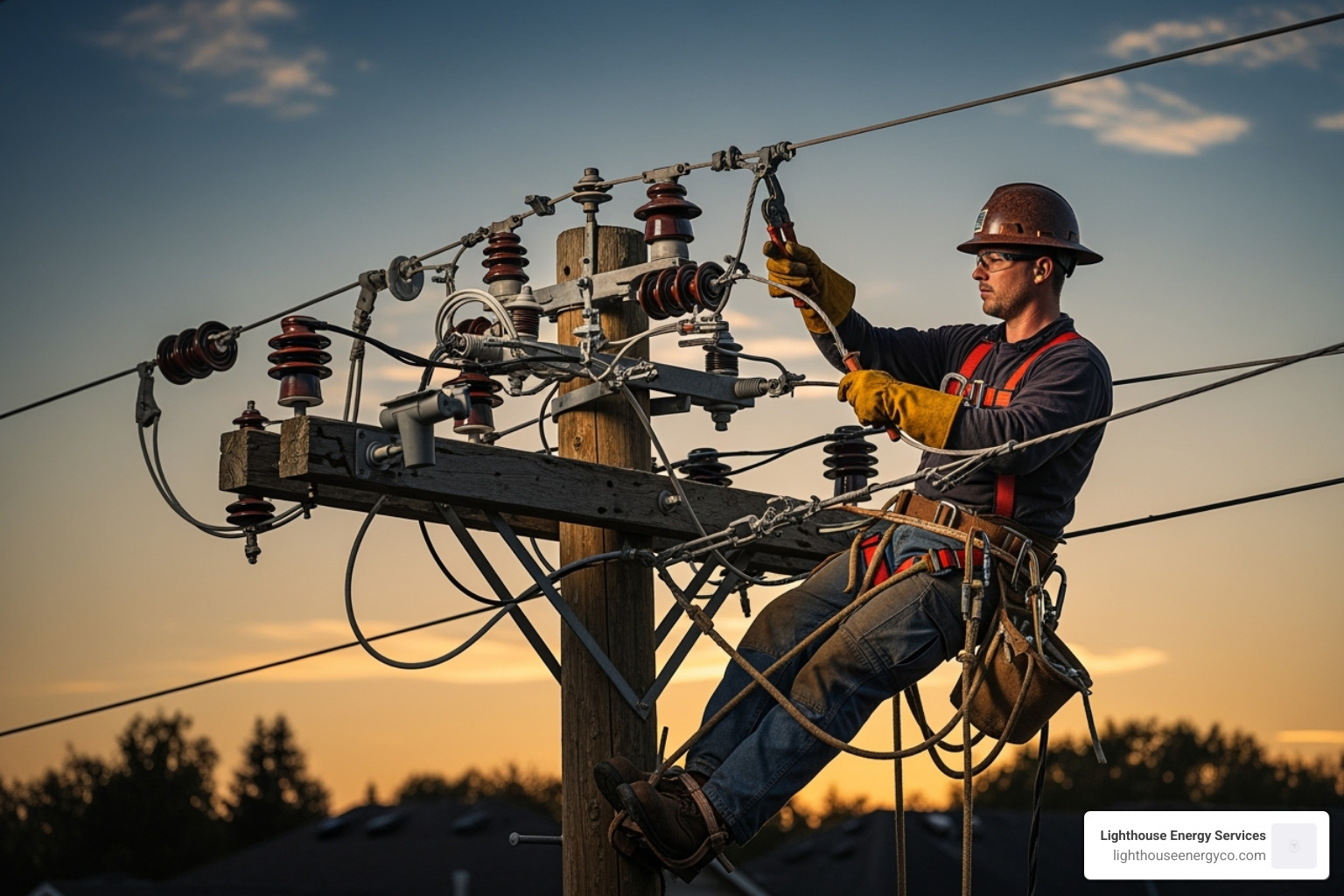
Core Principles of System Design
A solid distribution system is guided by fundamental engineering principles:
- Load Calculation: We begin by determining the total power a facility will need, analyzing peak demand and average loads to size the system correctly.
- Voltage Drop Analysis: We calculate voltage loss over distances to ensure equipment receives enough power to operate properly, preventing flickering lights and motor damage.
- Redundancy Planning: For critical facilities like hospitals and data centers, we design backup power paths (e.g., loop systems, generators) to ensure uninterrupted service.
- Fault Protection: We design coordinated protection schemes using fuses and circuit breakers to instantly detect and isolate faults, protecting people and equipment.
- System Grounding: Proper grounding is critical for safety, providing a safe path for fault currents to prevent electrocution and fires.
- Arc Flash Safety: Following NFPA 70E standards, we design systems to minimize the risk of dangerous arc flash incidents, which can cause severe injuries.
- Codes and Standards: All designs adhere to codes from the NEC, IEEE, and ANSI, as well as local utility requirements, to ensure safety and compliance.
- Future Growth: We design systems with flexibility, leaving room for future expansion and ensuring components are accessible for maintenance.
At Lighthouse Energy, these principles guide every project. We’re available 24/7 because electrical needs don’t follow business hours. Learn more about our services.
Critical Aspects of Operation and Maintenance
Keeping a system reliable for decades requires diligent maintenance:
- Load Balancing: We continuously monitor and adjust circuits to ensure current is distributed evenly across phases, improving efficiency and reducing equipment wear.
- Routine Inspections: Regular visual checks for corrosion, overheating, or physical damage help catch problems before they cause an outage.
- Vegetation Management: Trimming trees and vegetation near power lines is a simple but effective way to prevent storm-related outages.
- Asset Management: We use tracking systems to manage data on every component’s age, location, and maintenance history for efficient upgrades and repairs.
- Preventative Maintenance: Scheduled testing of protective devices, analysis of transformer oil, and tightening of connections prevent unexpected failures.
- Monitoring and Control: Modern SCADA systems provide real-time data, allowing operators to spot developing issues and remotely control equipment to reroute power and minimize downtime.
The Future of Power Distribution: Challenges and Innovations
Our electrical distribution systems are at a pivotal moment. Aging infrastructure, the rise of electric vehicles, and the need to integrate clean energy are driving a fundamental change toward grid modernization. The traditional one-way flow of power is being replaced by a more dynamic, two-way system.
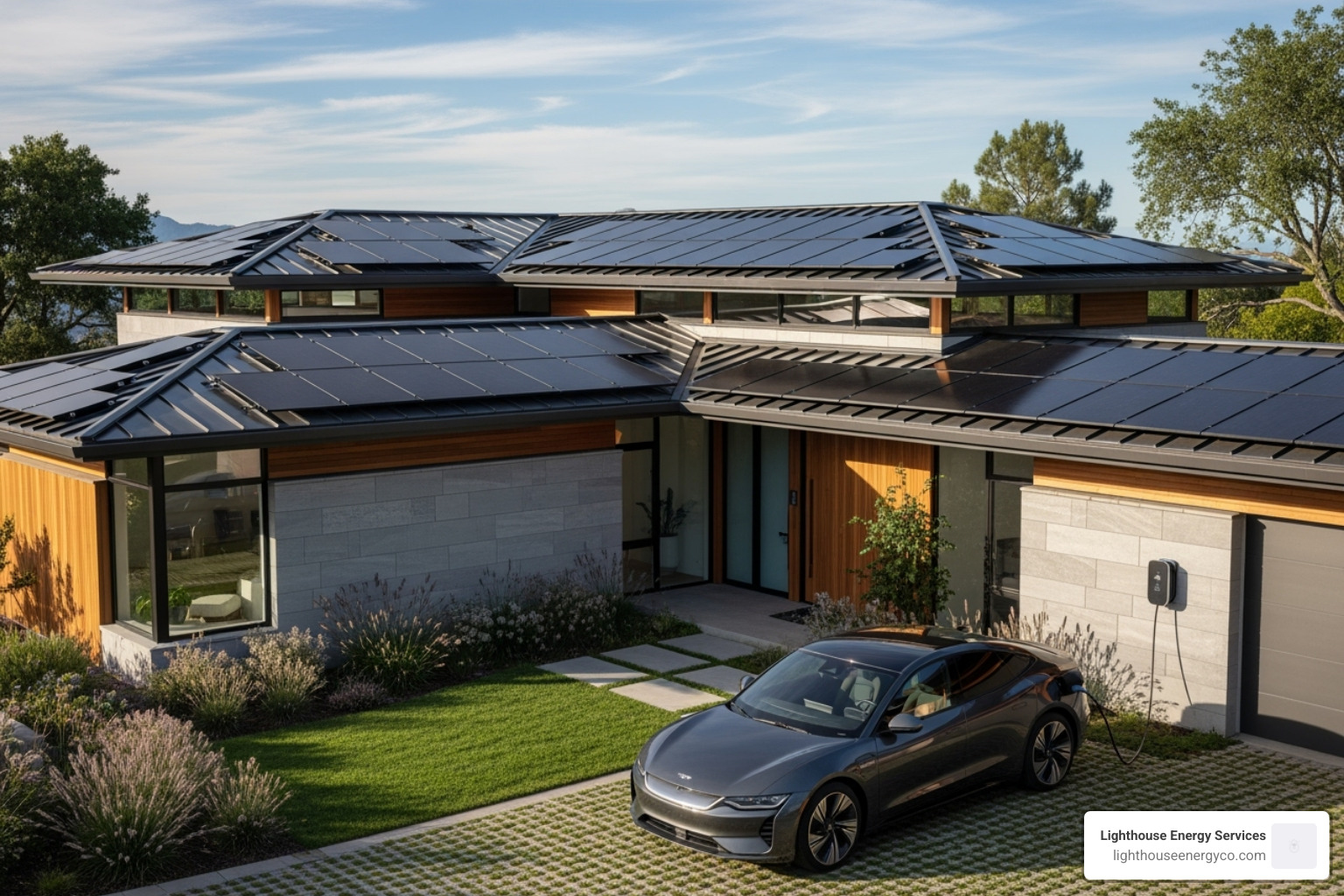
Integrating Renewables and DERs
One of the biggest shifts is the integration of Distributed Energy Resources (DERs)—smaller power sources like rooftop solar panels, battery storage, and even electric vehicles. This creates bidirectional power flow, where excess energy from a home’s solar panels can flow back into the grid.
This new reality requires sophisticated controls to manage safely. It also enables microgrids, which are self-contained electrical islands (like a hospital with its own solar and battery backup) that can disconnect from the main grid during an outage to maintain power. The main challenge is managing the intermittency of renewables like solar and wind. Battery storage is key to smoothing out these fluctuations and ensuring stable power quality. The impact of distributed energy resources on grid design is profound, requiring new models for a two-way power system. You can read more about the impact of distributed energy resources.
The Rise of the Smart Grid
To handle these new complexities, our electrical distribution systems are becoming “smart.” A smart grid uses digital technology to monitor, communicate, and respond to changing conditions in real time.
- SCADA (Supervisory Control and Data Acquisition) systems act as the grid’s nervous system, allowing operators to monitor the entire network and remotely control equipment to isolate faults or reroute power.
- Advanced Metering Infrastructure (AMI), or smart meters, provide real-time energy usage data to both utilities and customers. This enables faster outage detection and demand response programs that can save consumers money.
- Automation, through devices like automated reclosers, can detect and clear temporary faults automatically, significantly reducing outage durations without human intervention.
- Data Analytics helps process the massive amounts of data from these systems to predict equipment failures, optimize maintenance, and improve overall grid efficiency.
The smart grid represents a fundamental shift to a more resilient, efficient, and sustainable power supply.
Frequently Asked Questions about Electrical Distribution Systems
Over decades of working with electrical distribution systems, we’ve heard just about every question. Here are answers to the most common ones.
What is the difference between power transmission and distribution?
Think of it like a highway system. Transmission is the interstate, moving massive amounts of high-voltage power (69 kV to 765 kV) over long distances from power plants to major substations. Distribution is the local road network; it takes that power, steps it down to lower, safer voltages (4 kV to 35 kV, and finally to 120/240V), and delivers it to individual homes and businesses.
Why are there different voltages in the power grid?
It’s a balance of efficiency and safety. High voltage is used for transmission because it minimizes power loss over long distances—higher voltage means lower current, which reduces wasted energy. Low voltage (like 120V) is used in your home because it is much safer for everyday use. Transformers are used to step the voltage up for transmission and back down for distribution and use.
What is a “brownout” vs. a “blackout”?
A blackout is a complete loss of power. Everything shuts off. This is typically caused by a major fault, equipment failure, or severe weather.
A brownout is a drop in voltage, not a complete outage. Your lights may dim and appliances may struggle to run. Brownouts occur when power demand exceeds supply or due to a fault in the system that doesn’t cause a full interruption.
If you’re experiencing persistent power quality issues, give us a call. At Lighthouse Energy, we’re available 24/7 to diagnose and resolve electrical problems. Learn more about our commercial electrical services and how we can help.
Conclusion: Powering a Brighter, Safer Future
Electrical distribution systems are the invisible backbone of modern life, a complex network delivering safe, reliable power to every home and business. We’ve seen how this system works, from high-voltage transmission to the final connection at your building, and how it’s evolving to meet new challenges.
The grid is at a turning point. The one-way flow of power is giving way to a dynamic, two-way system integrating renewable energy, electric vehicles, and smart technologies. This evolution brings opportunities for a cleaner, more resilient power future, but it also demands expertise in design, installation, and maintenance.
At Lighthouse Energy, we have spent years working hands-on with these systems. We understand that reliable electricity is critical to keeping your business running. For commercial clients throughout Palm Beach County and South Florida—from Boca Raton to Miami and West Palm Beach—we are your trusted partner in electrical infrastructure.
Our team of qualified electricians is ready 24/7 to provide professional design, installation, and maintenance to ensure your electrical distribution systems are ready for today and tomorrow. We believe in getting the job done right, with transparent pricing and no hidden fees. To see how we can support your commercial electrical needs, learn more about our commercial electrical services.
